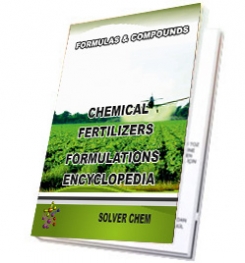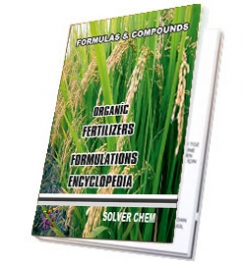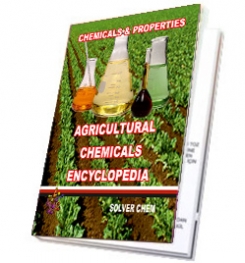Like the Asiatic citrus psyllid (Diaphorina citri Kuwayama), the African citrus psyllid (Trioza erytreaedel Guercio) is a sap-sucking insect that can transmit the lethal citrus disease, huanglongbing-also known as 'citrus greening'.
While the insect itself is a minor citrus pest, huanglongbing is a serious threat to citrus-producing areas worldwide. The African citrus psyllid, Asiatic citrus psyllid and huanglongbing are not known to occur in Australia.
Overview
| Symptoms |
As African citrus psyllid nymphs feed, they can cause distinctive cup-shaped or pit-like galls to form in leaves, particularly in the lower leaf surface of immature leaves. These are often visible as bumps in the upper leaf surface. They can cause severe leaf distortion, curling, stunting and leaf yellowing. The psyllids excrete pellets of honeydew that look like tiny, white eggs. The ground or vegetation under a badly infested tree can look like it has been dusted with white powder (the excreted pellets). |
|---|---|
| Appearance |
Adults
Nymphs
Eggs
|
| Hosts |
All citrus cultivars are a host for African citrus psyllids (e.g. orange, lemon, lime, grapefruit, mandarin, kumquat, tangelo, pomelo, native citrus and citrus rootstock). Native and exotic mock orange/orange jasmine (Murraya spp.), white ironwood (Vepris lanceolata), lime berry (Triphasia trifolia) and horsewood (Clausena anisata) are also hosts of the African citrus psyllid. They can also feed on Cape chestnut (Calodendrum capense), orange-climber or forest-pepper (Toddalia asiatica) and small knobwood (Zanthoxylum capense). |
| Spread of pest |
The African citrus psyllid prefers cooler, moist climates. It is very sensitive to extremes of hot, dry weather. It occurs throughout sub-Saharan Africa; Saudi Arabia; Yemen; the Indian Ocean islands of Madagascar, Mauritius and Reunion; and the Atlantic Ocean islands of Saint Helena, Madeira, Porto Santo, Tenerife and Gomera. Long-distance spread most commonly occurs via movement of plant material infested with psyllids. Short-distance dispersal can be wind-assisted for these short-distance fliers. Like the Asiatic citrus psyllid, the African citrus psyllid and huanglongbing could be introduced into Australia through illegal imports of host plants. The Australian Quarantine and Inspection Service (AQIS) closely regulates approved importation of plant material and monitors for illegal plant movement. |
| Management and quarantine |
Regularly monitor common host plants, such as citrus:
There are simple steps you can take to protect your farm:
|
RELATED TAGS: African citrus psyllid struggle, African citrus psyllid causes,African citrus psyllid drugs fight, African citrus psyllid cultural struggle, African citrus psyllid symptoms in grapefruits, African citrus psyllid eggs, eggs periods, African citrus psyllid effects, African citrus psyllid solutions for grapefruit, African citrus psyllid damages to grapefruits,African citrus psyllid appears to places, African citrus psyllid time of occurrence.
any liquid and solid organic fertilizer,
ORGANIC
FERTILIZERS
FORMULATIONS
ENCYCLOPEDİA
is enough.
This encyclopedia has many formulations about organic soil conditioner,humic acid productions,compositions,fulvic acid manufacturing,organic fertilizers,animal manure,amino acid organic fertilizers, organomineral powder fertilizers,organomineral liquid fertilizers productions,liquid root growth fertilizers formulas,granular root growth fertilizers,seaweed organic fertilizers,wermicompost fertilizers formulations,gel organic fertilizers,organomineral gel fertilizers manufacturing and any organic fertilizers etc.
All organic fertilizers in the encyclopedia are producible easily.You need no help and no technıcal support. The encyclopedia is enough to produce organic fertilizers itself.
ORGANIC
FERTILIZERS
FORMULATIONS
ENCYCLOPEDIA
is written clear and understandable.
RELATED TAGS: What is organic fertilizer,preparation of organic soil conditioner, liquid organic fertilizer manufacturing,animal manure manufacturing, manufacturing proces of animal manure,chicken manure,efficiency of humic acid in soil,effect of humic acid in plants, advantages of humic acid in agriculture, types of animal manure,seaweed fertilizer manufacturing process,production of liquid seaweed fertilizers, what is organic compost, preparation of organic compost,how to use organic compost,making organic compost, using of seaweed fertilizer,properties of seaweed organic fertilizers how to make liquid organic fertilizers, making organic compost,types of organic compost,manufacturing process of organic compost, how to make organic compost fertilizers, production of organic fertilizers,manufacturing process solid humic acid, formulation of humic acid,value of humic acid,manufacturing process of fulvic acid,how to produce humic acid,what is leoardite,where to use leonardite,types of leonardite,properties of leonardite,analyzes of leonardite,specification of leonardite, values of leonardite, what is leonardite humate,what is potassium humate, liquid humic acid preparation,powder humic acid production, granular soil conditioner manufacturing process, powder soil conditioner making,formulation of organic soil conditioner, making powder humic acid,humic acid production, composition of organic fertilizers,how to use organic fertilizers,why to use organic fertilizer,types of organic fertilizer,benefits of organic fertilizers,wermicompost fertilizers making, powder organic fertilizers,how to use organic fertilizers, making wermicompost fertilizer, formulation of seaweed fertilizers, amino acid fertilizer production,granular organic fertilizer,amino acid organic fertilizer manufacturing, properties of organic fertilizers, analyzes of organic fertilizer, specification of organic fertilizers, where to use organic fertilizers, what is soil amendments, humic acid making, how to make powder humic acid, manufacturing process of fulvic acid, herbal fulvic acid making, liquid humic acid process, formulation of humic acid,organic fertilizers for plants, organic fertilizers in agriculture, how to produce organic fertilizers, animal manure manufacturing process, herbal fertilizers, what is organic fertilizer compost, what is organic agriculture, how to make organic agriculture, advantages of organic fertilizers, effects of organic fertilizer, results of organic fertilizers, indications of organic fertilizers, symptoms of organic fertilizers, preparation of organic fertilizers, calculation of organic fertilizers, compounds of organic fertilizers,composition of liquid organic fertilizers, fertilization of organic fertilizers,why to use organic fertilizers.what is humate, types of humates,benefit of humate,potassium humate manufacturing process.,using powder soil conditioner, properties of granular soil conditioner,what is pellet organic soil conditioner.what is amino acid fertilizer, how to use organic amino acid fertilizsers,making amino acid fertilizers,formulation of amino acid fertilizers,manufacturing process of amino acid fertilizers, what is organic compost, where to use organic compost, types of organic compost in plants,benefits of organic compost in soil, preparation of organic compost in agriculture.


E - BOOKS AND HARD BOOKS

HOW TO BUY
AGRICULTURE ENCYCLOPEDIAS AND VIDEOS
|
|
|
|
|
|
|
|
|
